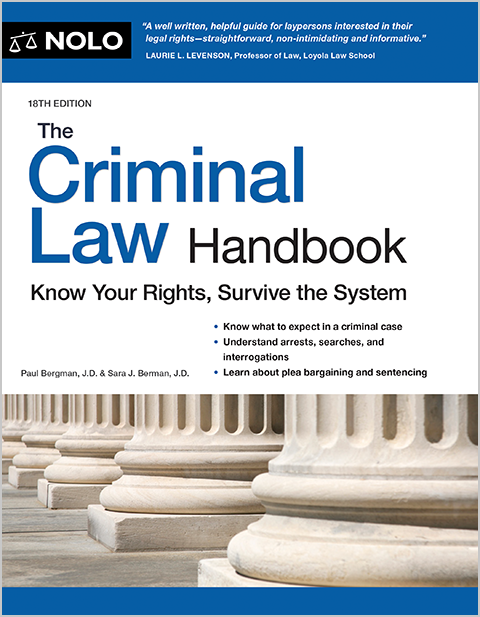Getting the claims examiner or judge to believe your limitations is half the battle of winning Social Security disability benefits.
One of the key factors the Social Security Administration (SSA) looks at to determine disability is whether your self-reported symptoms are consistent with objective medical evidence. Because reports of chronic pain or mental distress are fundamentally subjective, the SSA needs to see that they're in line with evidence like lab tests and doctor's notes.
In the past, Social Security had to decide whether an applicant's statements of subjective symptoms were "credible," a term which implied that the agency was making a character judgment. But the vast majority of people who are denied disability benefits aren't exaggerating or making it up—they just don't have the right evidence to show they can't do any jobs.
Since releasing Social Security Ruling 16-3p, the SSA no longer formally assesses credibility when deciding disability claims, but it's still a factor in a broader sense. You'll need to have believably disabling functional limitations in order to win a Social Security disability case. Below are a few ways you can show the agency that your pain and other symptoms legitimately result in your inability to work.
Fill Out Your Social Security Disability Function Report
When you first apply for disability benefits, you should be prepared to answer questions about your symptoms in Form SSA-3373, Adult Function Report (also referred to as the "activities of daily living" or "ADL" questionnaire). Depending on where you live, your state's Disability Determination Services might also have you fill out a pain questionnaire with questions tailored to specific activities that cause you to hurt.
You'll submit these forms along with your Adult Disability Report when you file your initial application, so it's important to make sure you don't rush through it or neglect important details. Here are some tips on how to fill out your disability function report in order to increase your chances of winning your claim.
- Use numbers where possible. Probably the most common (and avoidable) mistake that applicants make is not being specific enough when describing their pain. "It hurts when I stand too long" or "I ache when I lift something heavy" aren't helpful descriptions, because the SSA has no way of knowing what "too long" or "heavy" means to you. Details such as "I get shooting pain in my leg after standing for 10 minutes" or "My neck starts to throb carrying a gallon of milk" give the agency a much clearer idea of what you can and can't do.
- Provide context. The function report contains a lot of "Yes" or "No" checkboxes with a short space to explain your answers. Always explain your answers—otherwise you run the risk of the SSA making an assumption about your abilities that isn't correct. If you prepare your own meals but pain in your hands makes it harder for you to use cooking tools, simply checking "yes" doesn't paint the whole picture. Address any difficulties in chores that you do in the space provided.
- Discuss your mental health. Much like pain, mental health symptoms can be hard to document objectively. But symptoms of mental conditions can have physical manifestations. If you're lacking the motivation to do household chores due to depression, or if anxiety keeps you from social interactions, you should mention this in your function report.
Because it can take up to several years before you're able to see an administrative law judge—the appeal stage where applicants have the greatest chance of success—you'll likely have to describe your functioning several times to disability claims examiners along the way. While it can feel tiresome to rehash your limitations, the SSA needs to know whether your symptoms have gotten better, worse, or remained constant during the application process.
Answer Questions from a Disability Judge
Once you get to the hearing level, you'll be able to describe your pain directly to an administrative law judge. The judge will likely have questions to ask you as well, so you should be ready to answer them with the same level of detail (if not more) as you did in your disability function report. Here's some ways you can make the most of your hearing time.
- Rate your pain realistically. Judges typically ask you to rate your pain on a ten-point scale. While it's tempting to say that your pain is at a 10 all the time, it's probably more accurate to state that your pain is at a less extreme base level, but that certain activities can increase or decrease your pain. This gives the judge a better sense of what you should avoid doing at work.
- Use adjectives to describe your pain. Your disability hearing will be recorded, so be sure to verbally indicate the location of your pain instead of pointing to where it hurts. Terms such as "shooting," "stabbing," "dull," or "electric" can help the judge understand what your pain feels like. "It feels like electric shocks running down my arm into my hand when I move my right shoulder" is more useful to the judge than "My arm is sore."
- Explain any inconsistencies. If you've engaged in any activities that at first glance don't seem to be compatible with your disabling condition, this is your opportunity to clear them up with the judge. For example, if you have chronic pain but recently went on a long hike, you might tell the judge that the hike took so much energy out of you that you stayed in bed for the rest of the week. Or if you went to a birthday party despite anxiety, you can say that you could only stay for 15 minutes before you had to leave.
- Be honest. You don't have to be in an iron lung in order to get disability benefits, and judges are skeptical of unrealistic limitations (such as not being able to lift anything, no matter how small). Don't embellish your symptoms, but don't downplay them, either.
You'll probably have to sit for at least an hour at your disability hearing, so if extended sitting causes you discomfort, don't just grin and bear it. Tell the judge that you're in pain, and ask to stand up and walk around. Judges won't mind making it easier for you to finish the hearing, and your body language can show the ALJ what movements you have difficulty with.
Keep in mind that Social Security isn't allowed to award disability benefits based only on subjective symptoms. Even if you fully filled out your function report or answered all the judge's questions perfectly, you'll need to show that you have a documented mental health disorder or that your pain is caused by an underlying condition that shows up on medical diagnostic tests.
Document Your Medical Treatment
By their nature, pain and mental health symptoms are highly individualized. A diagnosis of moderate spinal stenosis can cause severe, debilitating pain in one person, while somebody else with the same diagnosis might not have any issues. The SSA acknowledges that symptoms can feel more intense than what's shown by objective evidence alone, but the agency only considers your limitations to the extent they're consistent with your medical records.
So no matter what step you are in the disability determination process, diligently documenting your treatment is key to winning your case. You should be ready to submit the following information to the SSA along with your function report or before you have a hearing with an administrative law judge.
- Your doctor's clinic notes. Be sure to tell your doctor about the location, intensity, frequency, and duration of your symptoms at each visit. If you're getting treatment for mental health, you should have counseling or therapy notes that document your mood (such as whether you're withdrawn, angry, or tearful). If your doctors aren't aware of your symptoms, the SSA will assume everything is fine.
- A Residual Functional Capacity (RFC) form. Your RFC identifies your physical and mental limitations and how these limitations would restrict you in a job setting. Ask your doctor to complete an RFC form or provide a medical opinion about the nature and extent of your limitations and how they would affect you over a normal workday.
- Your pain diary. Record the details of your pain in a daily journal. Include the severity of your pain (on a 0-10 scale), the location of your pain, any possible causes, and the nature and effects of any treatment. Most pain management facilities will be able to provide you with a pain diary to fill out.
- Assistive devices or parking placards. If you have mobility issues that require an assistive device like a walker or a cane, or if you've obtained a handicapped parking permit from your state, make sure you provide evidence (such as a picture of the permit or a prescription for a walker.)
- Hospitalizations. Get admission and discharge summaries from any hospitals where you've been treated or undergone surgery, whether as an inpatient or an outpatient. The SSA wants to know if you're having such bad pain that you need to go to the hospital.
Social Security won't award you benefits if your doctors haven't been able to identify a condition that can be reasonably expected to produce pain or other symptoms. Your medical records should include results of clinical exams (such as a tender-point exam for fibromyalgia or a straight leg raising test for back pain), X-rays, MRIs, and lab tests that your doctors used to diagnose your impairment or rule out other causes.
Use Your Work History to Your Advantage
If you have a consistent record of employment throughout your adult life, don't hesitate to emphasize that fact. Because it's unlikely that somebody who's been working for many years would want to give up a steady income for relatively modest disability benefits, a strong work history can sway a claims examiner or judge who might be on the fence about your case.
A strong work history tends to show Social Security that you're not engaged in "benefit-seeking," or trying to take advantage of the system. The SSA has access to your earnings and employment history, but only for the last five years, so if you've worked longer, be sure to point it out. If you enjoyed working and wish that you could return to your previous jobs, you might mention that as well.
On the other hand, in some cases a sporadic work history can support a disability claim based on mental health. Somebody with schizophrenia may miss many days of work during a manic episode, for example, or somebody with obsessive-compulsive disorder might be fired for interfering with coworkers' duties. Here, an inconsistent employment record makes it more believable that you have trouble holding down a job due to a mental disability.
Obtain Reports From Third Parties
Having a letter from a third-party who has witnessed your limitations can help strengthen your disability case. "Third parties" include doctors, friends, relatives, and former employers. An old boss might indicate that you were let go because you weren't able to lift boxes at your job, took unscheduled breaks, or couldn't stay on your feet. If you couldn't complete basic job duties at your past work, the SSA is more likely to find that you couldn't do the same at another job.
Opinion letters from your regular physician or psychologist—known as "medical source statements"—are especially helpful. In the statement to Social Security, your treating doctor should address your exertional (strength-related) and non-exertional limitations, including your ability to lift, carry, stand, sit, walk, bend, and stoop. Your doctor should also address whether they've observed any signs of "malingering" (exaggerating the severity of your symptoms).
If you're obtaining a third-party statement from a former co-worker, boss, friend, or family member, make sure it describes only direct interactions they've had with you. For example, if you struggle with severe anxiety, your cousin or neighbor might mention that they do the grocery shopping for you because you can't leave your house. Such statements can help confirm your self-reported symptoms and make your limitations more believable.
Get Legal Help to Describe Your Functioning
Chronic pain is sometimes the only symptom of back problems, migraines, fibromyalgia, joint pain, carpal tunnel syndrome, and reflex sympathetic dystrophy. And if the SSA doesn't find your complaints entirely believable, your chances of winning your case decrease considerably.
Additionally, most disability applicants who are ultimately awarded benefits aren't approved until after a hearing with a judge. Nationally, around 50% of hearings result in a favorable decision, but this varies significantly by region and doesn't mean that each individual application has a 50% chance of success.
Having an experienced disability attorney help you with your application can make the difference between winning your case and receiving a denial. Your lawyer can gather crucial medical records needed to establish that your symptoms are disabling, handle all correspondence with the SSA, and represent you at a disability hearing.


